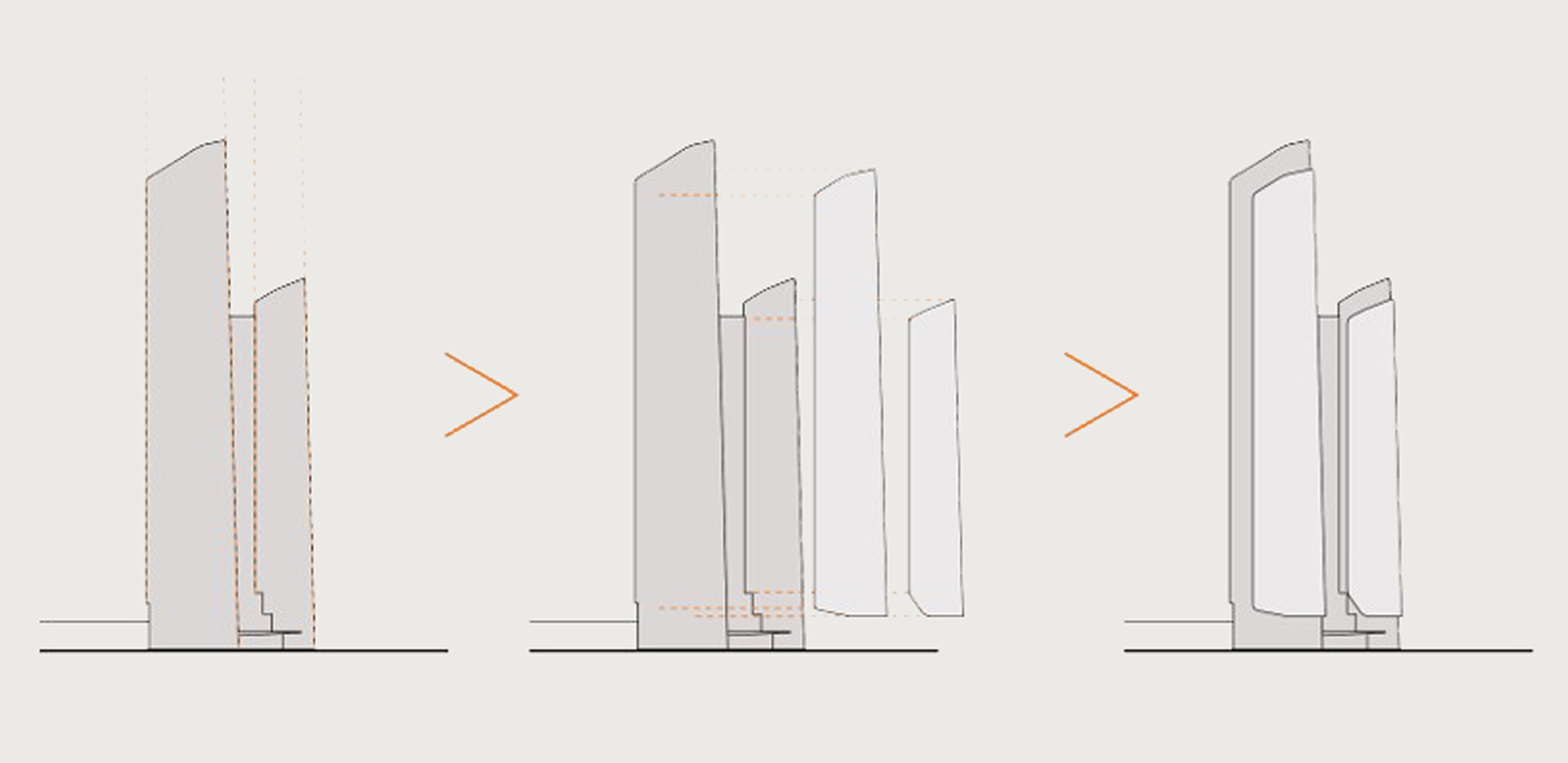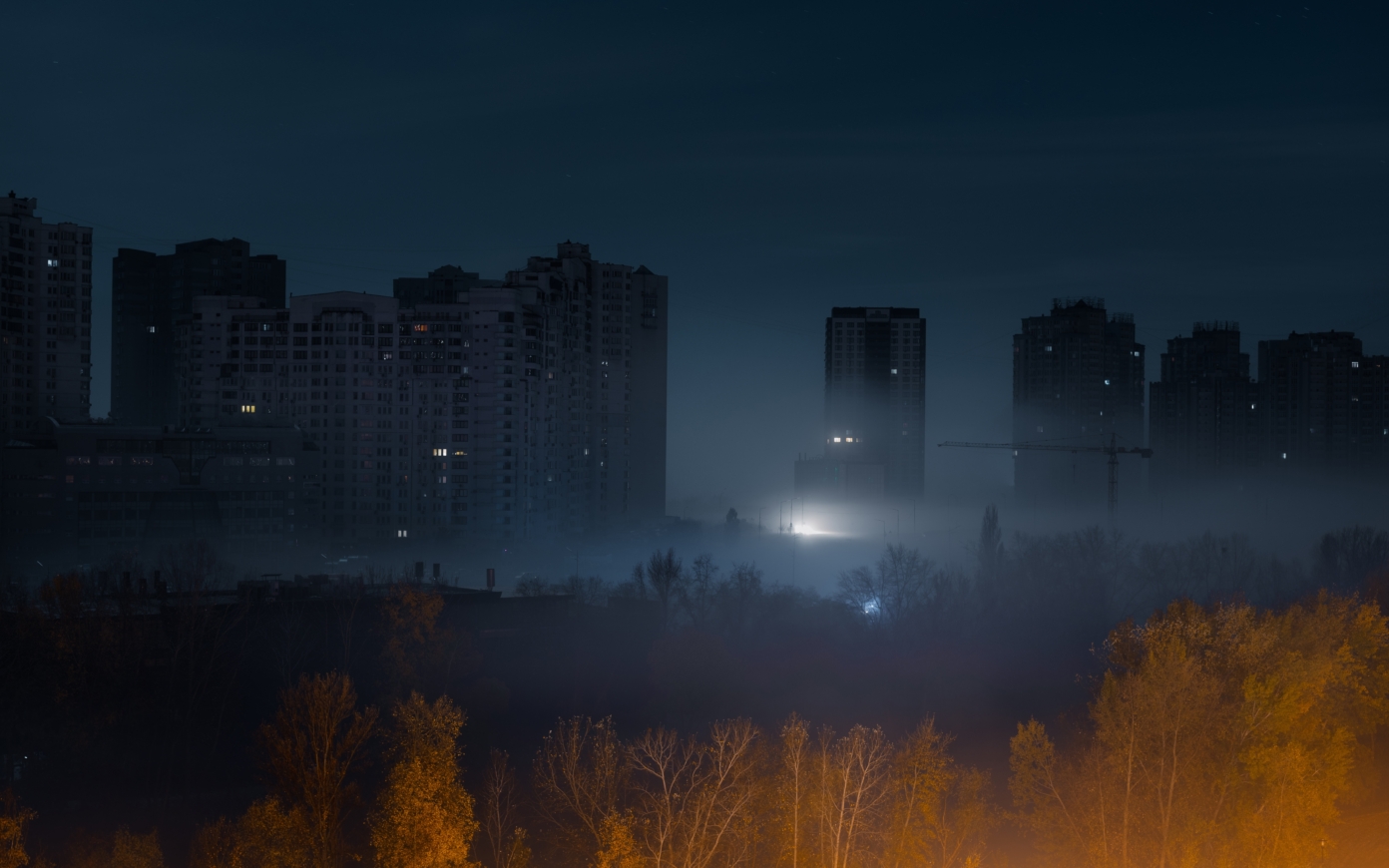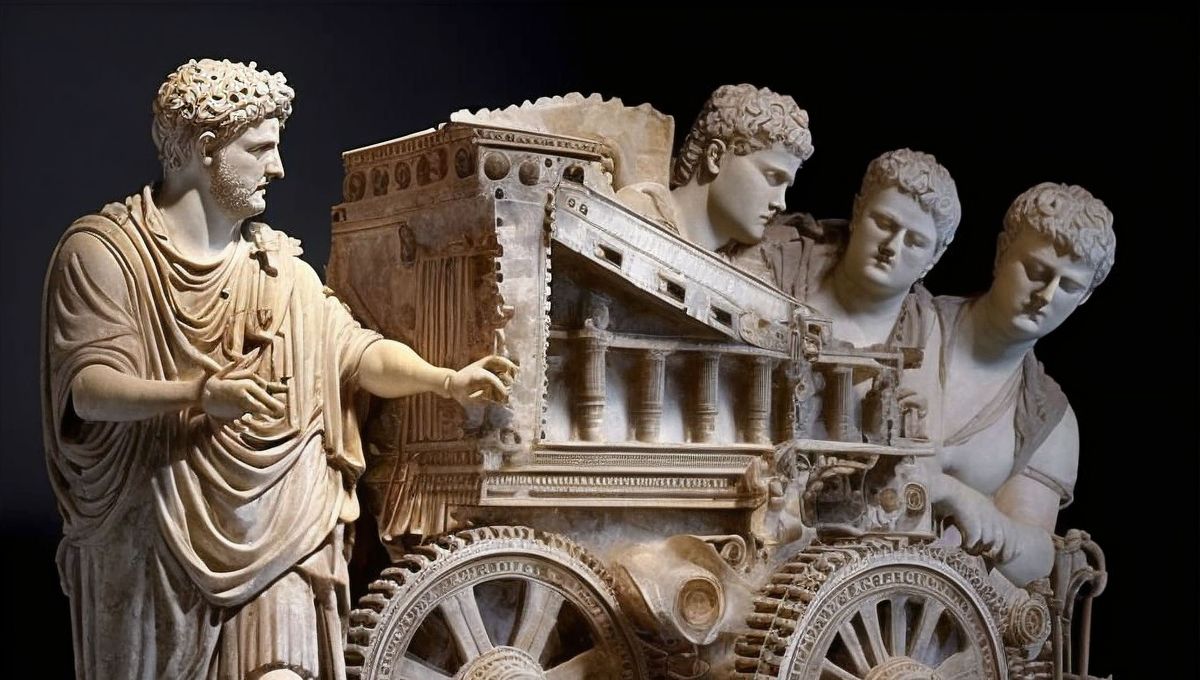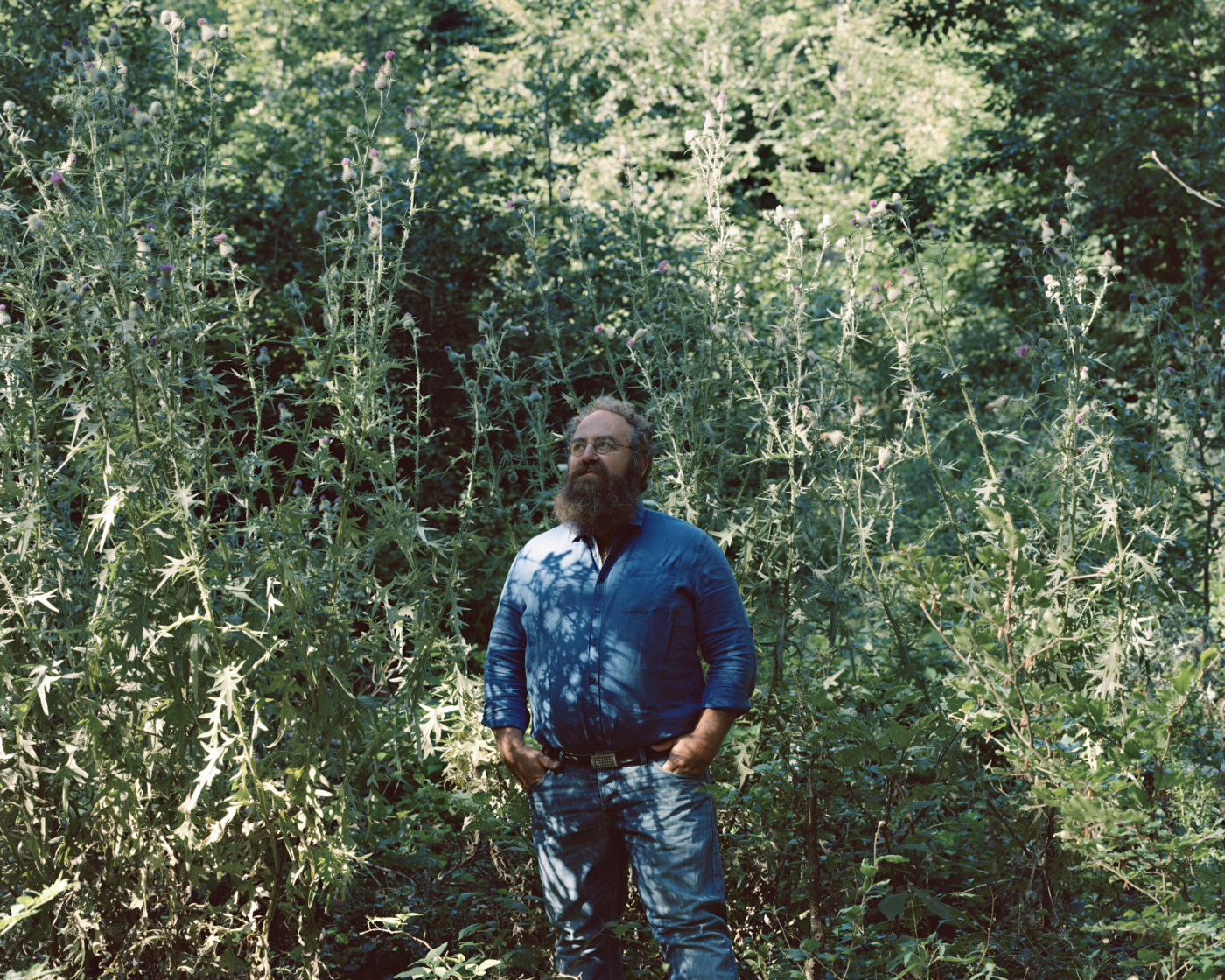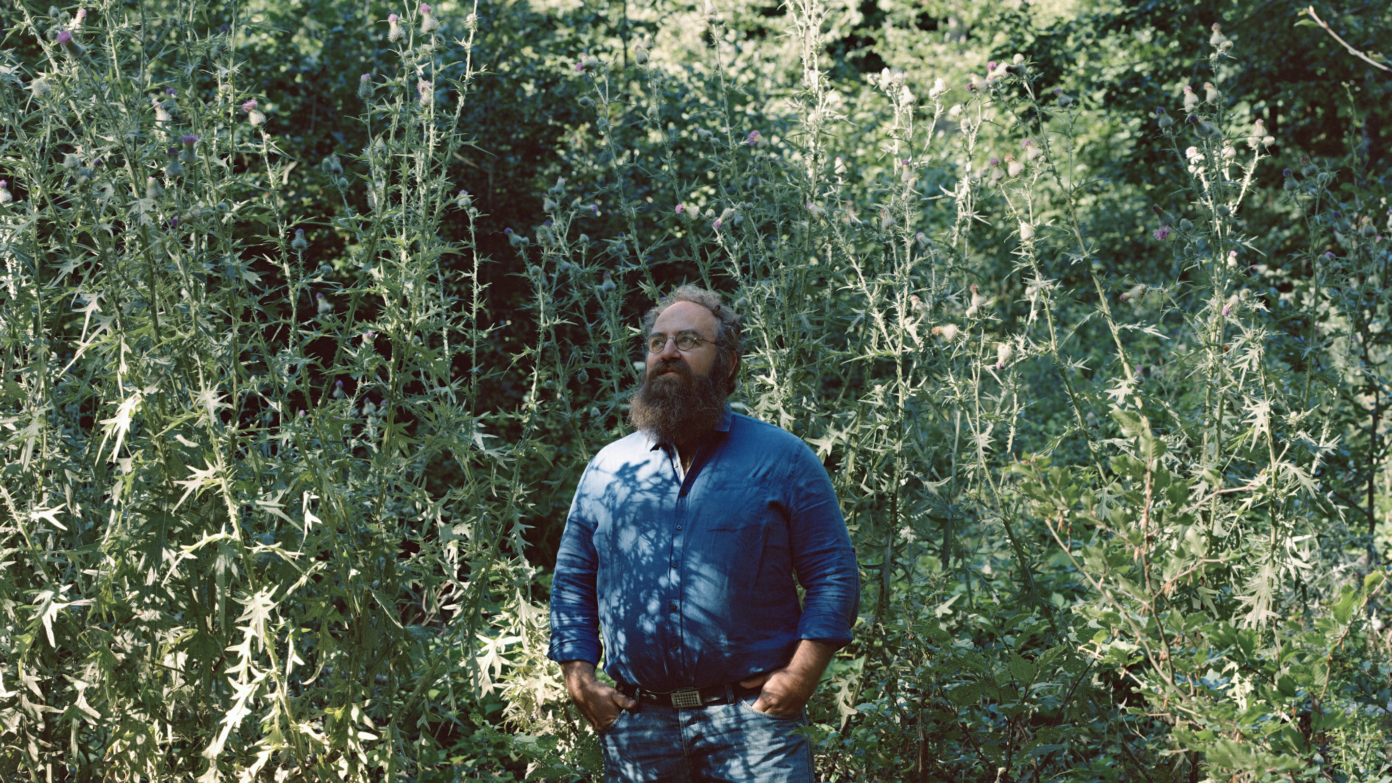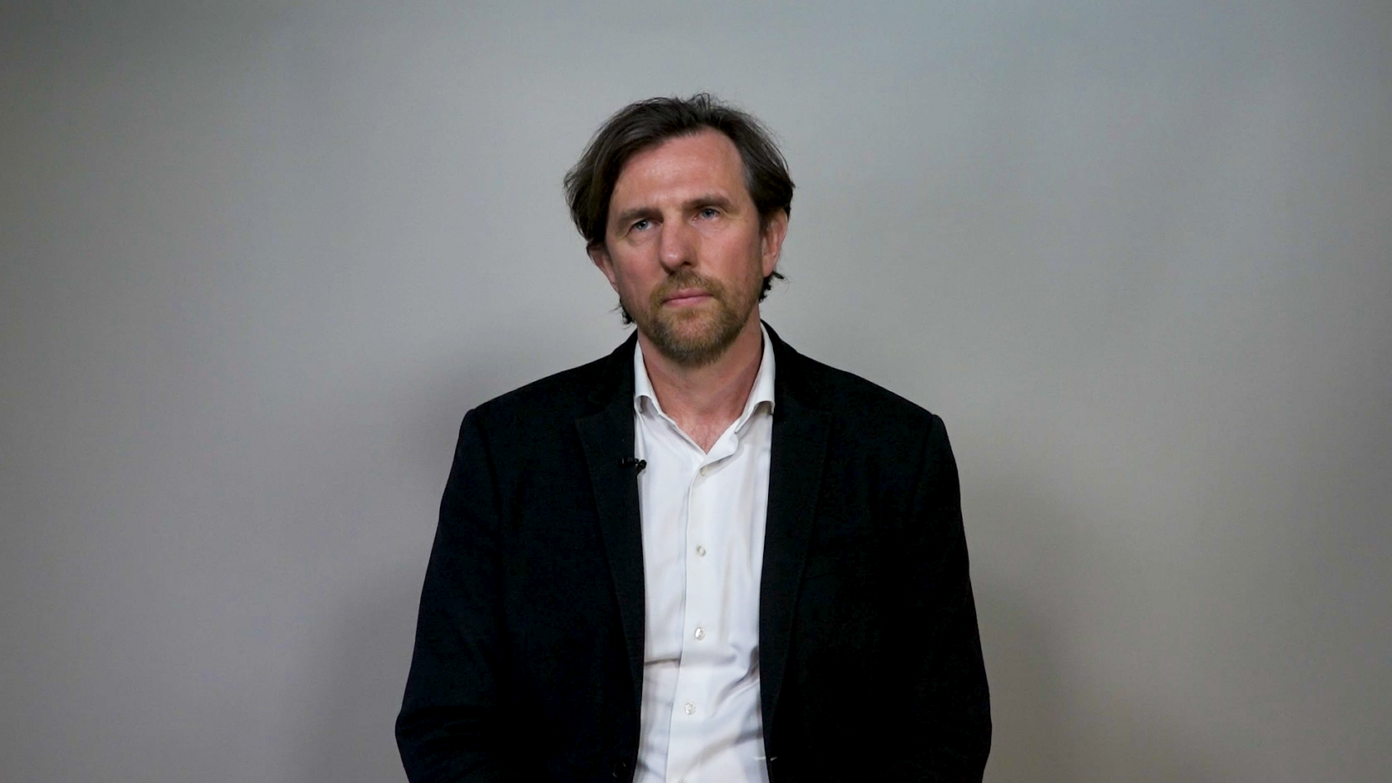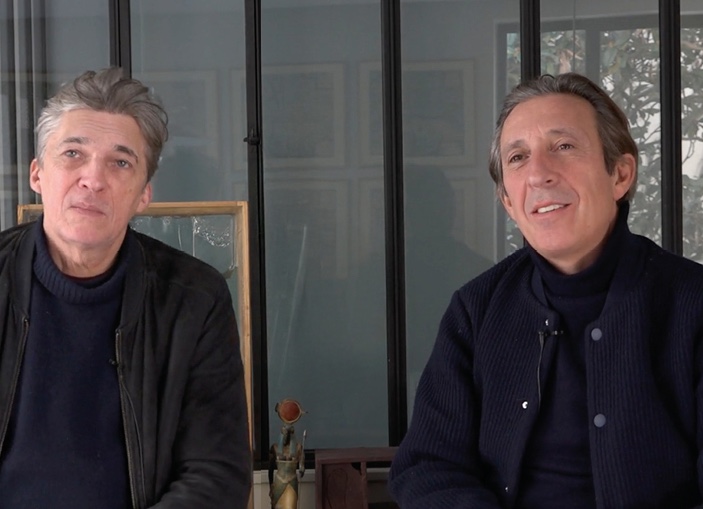Increasing the Exchange Surface
In order to draw natural light deeper inside the building, the archetypal form of the high-rise tower is called into question. The Link is made up of two cores connected in a figure-of-eight shape, thereby increasing the exchange surface with the exterior and leading to larger surfaces being exposed to direct sunlight instead of having blind elevator shafts at their core, as is typical in high-rises.
An architectural decision was made to open up as many perspectives as possible on the exceptional landscapes of the Seine hillsides, the Bois de Boulogne Park, the rooftops of Paris, and the La Défense skyline, thanks to full-height glazing.
This vast transparent surface, with 360 degrees of exposure to the sun, must however allow for user thermal comfort, as well as reduced energy use. How can natural light then be allowed in but not the heat, all the while preserving the views of the distant horizon? Tinted glass has run its course—it alters the perception of the landscape and generates significant energy consumption as workspaces must be artificially lit even during the daytime.
A Façade with Variable Typologies
Based on the interpretation of a solar simulation, PCA-STREAM’s architectural teams, in partnership with the engineering consultancy VS-A, have worked on adapting the façade to its environmental context. They have developed an envelope with variable typologies to address different constraints, with a single skin on the north side and a double skin on the south side, which has the most sun exposure.


